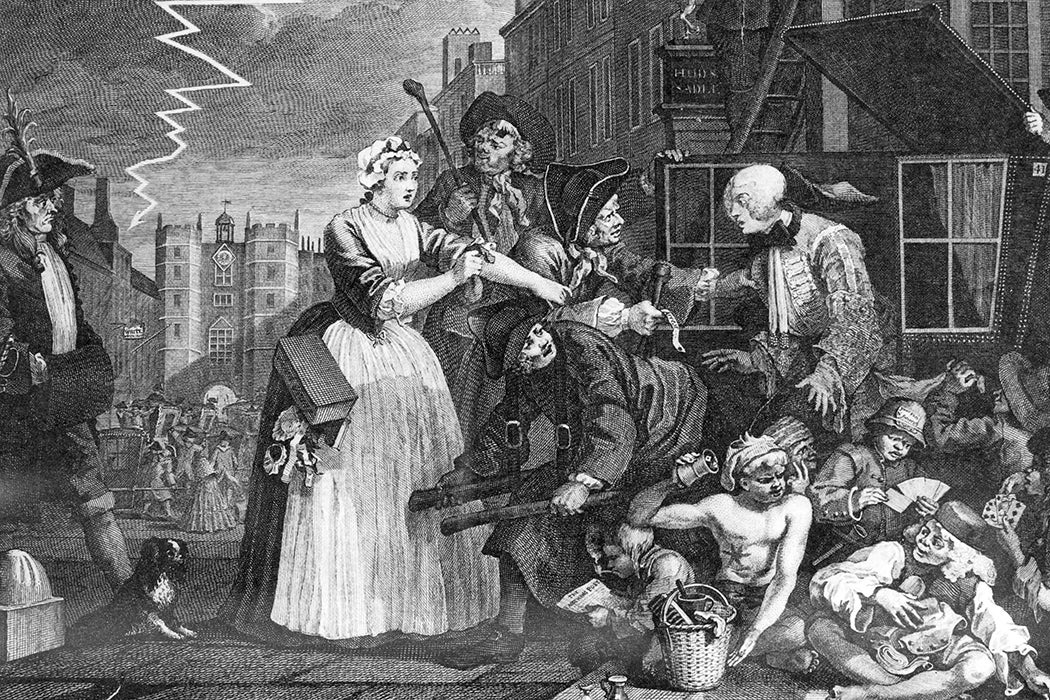How much does the media influence our perception of crime, the criminal justice system, and the police? These issues have a long history. Richard Ward calls a 1744 London crime wave the earliest example of the media whipping up a moral panic about street crime.
Moral panics are instances of mass fear of something said to threaten the very basis of society, whether that’s witchcraft, an unconventional aspect of sexuality, crime, or something else. Twentieth-century examples include the juvenile delinquency and comic book scares of the 1950s and the alleged satanic child abuse cases of the 1980-1990s. Such panics are fostered by mass media and exploited by self-appointed moralists and politicians.
The period Ward reviews was rich with reportage about crime and punishment. The venues included newspapers and periodicals, as well as biographies of criminals. The popular Proceedings of the Old Bailey (London’s Central Criminal Court) and the Ordinary’s Accounts of those hung were other contributions to the crime literature of the day. Ward argues that diaries and correspondence “make it clear that perceptions [about crime] were heavily influenced by [this] crime literature.”
According to Ward, experts have outlined six stages of crime wave moral panics. Those stages are:
1) A crime or series of crimes garner(s) media attention.
2) The media hypes the threat.
3) As a result of more news about crime, more crime gets reported to the police.
4) The crime rate is therefore judged to be higher than thought by media and law enforcement.
5) “New and heavier control and punishment measures are introduced.”
6) The panic fades away in a couple of months, but the new methods for controlling and punishing become the new norm.
In late summer of 1744, London witnessed some brazen and sometimes violent street robberies. The Daily Advertiser, one of the first London papers to report on the 1744 wave, described thieves “as daring and barbarous as those in Paris.” Historians point to a gang from Black Boy Alley, off Crick Lane, as being responsible for spate of robberies. But “level of ‘real’ crime committed” is beyond measuring now. Fear of crime doesn’t start in a vacuum: there were robberies, but it was the decision of editors and publishers to make them news that made it a full-fledged moral panic.
By the second half of 1744, exciting foreign news which had dominated newspaper columns, like that of the War of Jenkin’s Ear and the War of Austrian Succession, was drying up. The dearth of exciting news from abroad had to be replaced with something. So suddenly the streets were “swarming” with criminals “infesting” the city. In a succinct turn of phrase (but was it the robbers’ or the victim’s or the journalist’s?) one victim was threatened with being cut “as small as sausages.”
Once the problem was hyped, questions about what should be done about it arose in the papers in November and December of 1744. The middle-class reading public’s opinion was firmly on the side of cracking down hard. Patrols were instituted (London’s Metropolitan Police Service wouldn’t be instituted until 1829). Rewards were offered by civil and ecclesiastical authorities. People were prosecuted. And, then, by January 1745, the media was onto other topics.
Weekly Newsletter
The shift was so abrupt, writes Ward, that no “metropolitan London newspaper provided a report of the eighteen malefactors executed at Tyburn on Christmas Eve,” among them Black Boy Alley gang members. This, mind you, when executions were rather rowdy public entertainments. Then again. this sudden shift in attention is typical of these periodic moral panics. Heads roll, and the moralists move on to other ways of scaring people.







